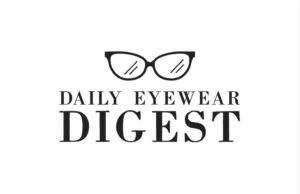The rise of augmented reality (AR) technology is transforming various fields, from gaming to healthcare, and now it’s making remarkable strides in assistive devices for those with low vision. Augmented reality filters in eyewear offer a revolutionary solution, using real-time data to enhance visual perception, provide spatial awareness, and improve text and object recognition for users. In this article, we’ll explore how AR filters are aiding those with low vision, enhancing their independence, and reshaping assistive eyewear technology.
Understanding Low Vision
Definition and Causes of Low Vision
Low vision refers to a visual impairment that cannot be corrected with standard glasses, contact lenses, or surgery. This condition encompasses a range of impairments, such as reduced clarity, restricted fields of vision, and difficulty perceiving colors or contrast. Causes include macular degeneration, glaucoma, diabetic retinopathy, and other eye diseases or injuries.
Challenges Faced by Individuals with Low Vision
Daily life can be a significant challenge for individuals with low vision. Basic tasks like reading, recognizing faces, and navigating new environments become difficult, reducing independence and increasing the need for external support.
Current Assistive Technologies Available for Low Vision
Traditional aids, such as magnifiers and screen readers, have long been helpful but are limited in scope and effectiveness. However, with advances in AR technology, assistive devices are evolving to provide more seamless, real-time support.
What is Augmented Reality (AR)?
Brief Overview of Augmented Reality
Augmented reality technology superimposes digital information onto the physical world, creating an “augmented” view of real-life surroundings. AR glasses or eyewear leverage a combination of sensors, cameras, and displays to integrate digital information into the user’s line of sight, enhancing what they see.
Differences Between AR, VR, and MR (Mixed Reality)
While virtual reality (VR) immerses users in a fully digital environment and mixed reality (MR) blends digital elements with physical interactions, AR overlays data onto the real world without replacing it. This distinction is crucial for low vision aid, as it allows users to maintain an understanding of their surroundings with visual enhancements that improve clarity, contrast, or recognition.
How AR is Applied in Everyday Devices
AR technology is already prevalent in mobile devices and wearables, with applications like navigation, gaming, and even visual learning. For low vision aid, AR eyewear adapts these capabilities for clarity and navigational assistance, helping people see better in real-world scenarios.
The Role of AR Filters in Enhancing Vision
What AR Filters Are and How They Work
AR filters modify real-world images in real-time, adding contrast, magnification, or highlighting edges to improve the visibility of objects, text, or people. For low vision users, these filters offer customizable settings that enhance their sight depending on individual needs and environment.
Types of AR Filters That Can Assist Low Vision
Some AR filters commonly used in low vision assistive eyewear include:
- Contrast Enhancement: Increases contrast between objects and backgrounds, making them easier to distinguish.
- Edge Detection: Highlights edges to define objects clearly, especially helpful in low-light situations.
- Magnification: Allows users to zoom in on text or objects for easier readability.
Examples of Visual Enhancements Enabled by AR Filters
With AR filters, users can experience improved clarity when reading small print, enhanced facial recognition for social interactions, and even safer navigation through edge-detection features that improve depth perception.
How AR Eyewear Works for Low Vision
Hardware Components in AR Eyewear for Vision Enhancement
AR eyewear typically includes high-definition cameras, depth sensors, and micro-displays within the lenses. This technology allows real-time data processing and display of visual enhancements directly onto the user’s view.
Software and Applications Designed for Low Vision in AR Glasses
Specialized software applications designed for low vision provide options like text enlargement, voice commands, and customizable visual settings for specific visual impairments.
Adaptive Features in AR Eyewear
Some AR glasses include adaptive features such as voice-guided menus, AI-driven image recognition, and even customizable display settings for varied lighting conditions. These features adapt to the needs of the user, creating a personalized visual aid.
Benefits of AR Filters for Low Vision
AR filters can greatly enhance a low vision user’s experience by providing:
- Enhanced Contrast and Clarity: Making it easier to distinguish objects, text, or faces.
- Improved Depth Perception: Important for safe navigation and movement.
- Real-Time Text and Object Recognition: Allows users to read signs or labels and recognize familiar objects with greater ease.
Types of AR Filters for Low Vision Assistance
- Brightness and Contrast Adjustments: Increases visibility in low-light or high-glare environments.
- Text Magnification and Reading Assistance: Helps users read smaller text in books, newspapers, and digital screens.
- Edge Detection and High-Contrast Modes: Improves object definition, especially useful in dimly lit or crowded spaces.
Leading AR Eyewear Brands and Solutions for Low Vision
Brands like eSight, Aira, and OrCam are pioneering AR solutions for low vision. Each brand offers unique features such as real-time guidance, AI-powered recognition, and customizable contrast settings.
Case Studies: Success Stories of AR Eyewear for Low Vision
Numerous case studies show how AR eyewear has improved lives, with users reporting greater independence, increased social confidence, and the ability to perform daily tasks with newfound ease.
Practical Applications of AR Eyewear for Low Vision
- Enhancing Mobility and Navigation: Real-time AR adjustments support safe navigation.
- Daily Tasks: Reading menus, books, and digital content becomes easier.
- Improved Social Interactions: Users report feeling more confident engaging with others, aided by features like facial recognition.
Potential Limitations and Challenges
Although AR eyewear offers numerous benefits, limitations include battery life, cost, and the potential for a learning curve in adapting to AR features. Current models may also have limited field of view or weight issues, impacting comfort over prolonged use.
Future of AR Filters for Low Vision Support
As AR technology advances, expect lighter, more affordable, and even more accessible models. Emerging technology may lead to expanded applications in medicine, outdoor navigation, and enhanced accessibility.
How to Choose AR Eyewear for Low Vision
Consider factors such as comfort, display clarity, battery life, and compatibility with prescription lenses. Trial periods are helpful for finding the right brand and model.
Impact of AR Eyewear on Independence for Low Vision Users
AR eyewear empowers users, enabling greater independence, enhancing mobility, and improving social confidence. These positive effects can lead to a higher quality of life and a renewed sense of autonomy.
FAQs About AR Filters in Eyewear for Low Vision
- Are AR Glasses Suitable for All Types of Low Vision?
Many types can benefit, though individual needs vary. - How Do AR Filters Work with Prescription Lenses?
Some models support prescription integration; consult your provider. - Can AR Eyewear Replace Traditional Low Vision Aids?
AR is often supplementary but can replace some aids. - What is the Battery Life of AR Eyewear?
Typically between 3-8 hours, depending on usage. - Are There AR Eyewear Models Covered by Insurance?
Coverage varies; check with providers for options. - Is There a Learning Curve to Using AR Filters for Vision?
Initial adjustment may be needed; most users adapt quickly.
Conclusion
Augmented reality filters in eyewear represent a revolutionary approach to assistive technology for low vision. By providing real-time visual enhancements, AR eyewear helps users navigate their world with greater ease, independence, and confidence. As technology evolves, AR for low vision support will only continue to improve, offering more individuals the opportunity to lead empowered and independent lives.

